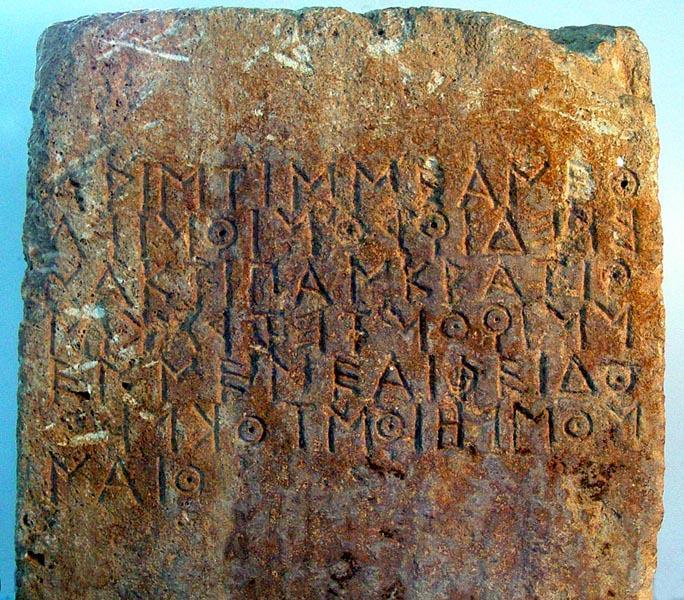
Statue base for Nemean victor, Aristis of Kleonai, inscribed in boustrophedon (lines alternating left to right and right to left), ca. 550 B.C.
Although the site and the games seem to have been supervised by Kleonai, it is clear that the ultimate authority resided with Argos. It may therefore have been as a result of the alliance between Argos and Athens that there was a violent destruction of Nemea during the Peloponnesian War when Sparta carried out maneuvers in the region around Nemea in 419/8 and 415/4 B.C. (Thucydides 5.58-60 and 6.95, respectively).
Following this destruction, the site lay in ruins for about 75 years. The games continued, but at Argos. At a point in time not far from 330 B.C., the games returned to Nemea as is attested by a massive building program which included the Temple of Zeus and the Early Hellenistic Stadium. It is very likely that this program represents a Macedonian role at Nemea, specifically from Philip and his son Alexander the Great.
The Games at Nemea did not endure, however, and by 271 B.C. they had once again been moved to Argos. Nemean victors are recorded throughout the remainder of antiquity, but not at Nemea itself. When Pausanias visited around A.D. 150 he saw an abandoned ruin with the roof of the Temple of Zeus fallen in and the cult statue missing. It was probably that cult statue, the work of the famous Lysippos, that Pausanias later saw at Argos, in the Temple of Nemean Zeus there.